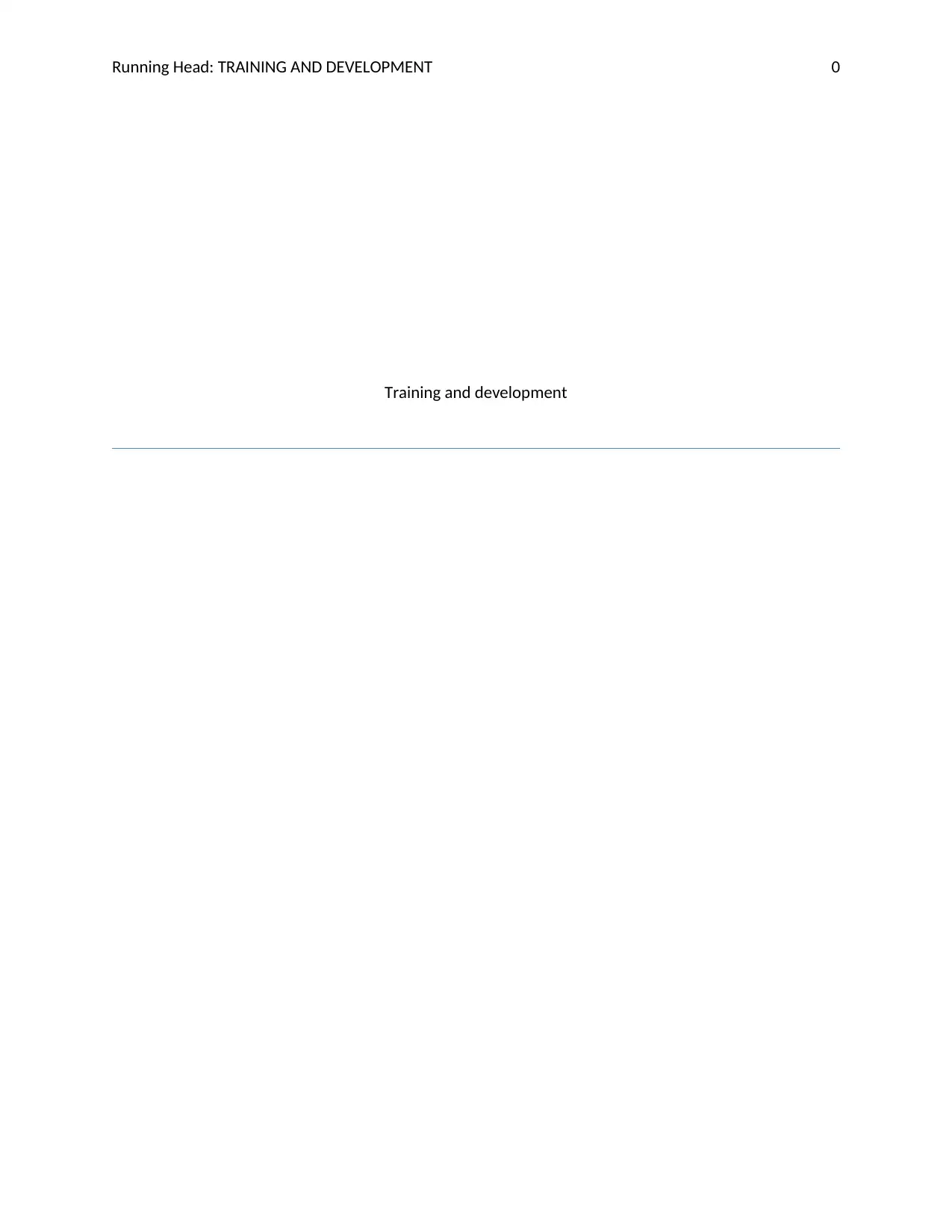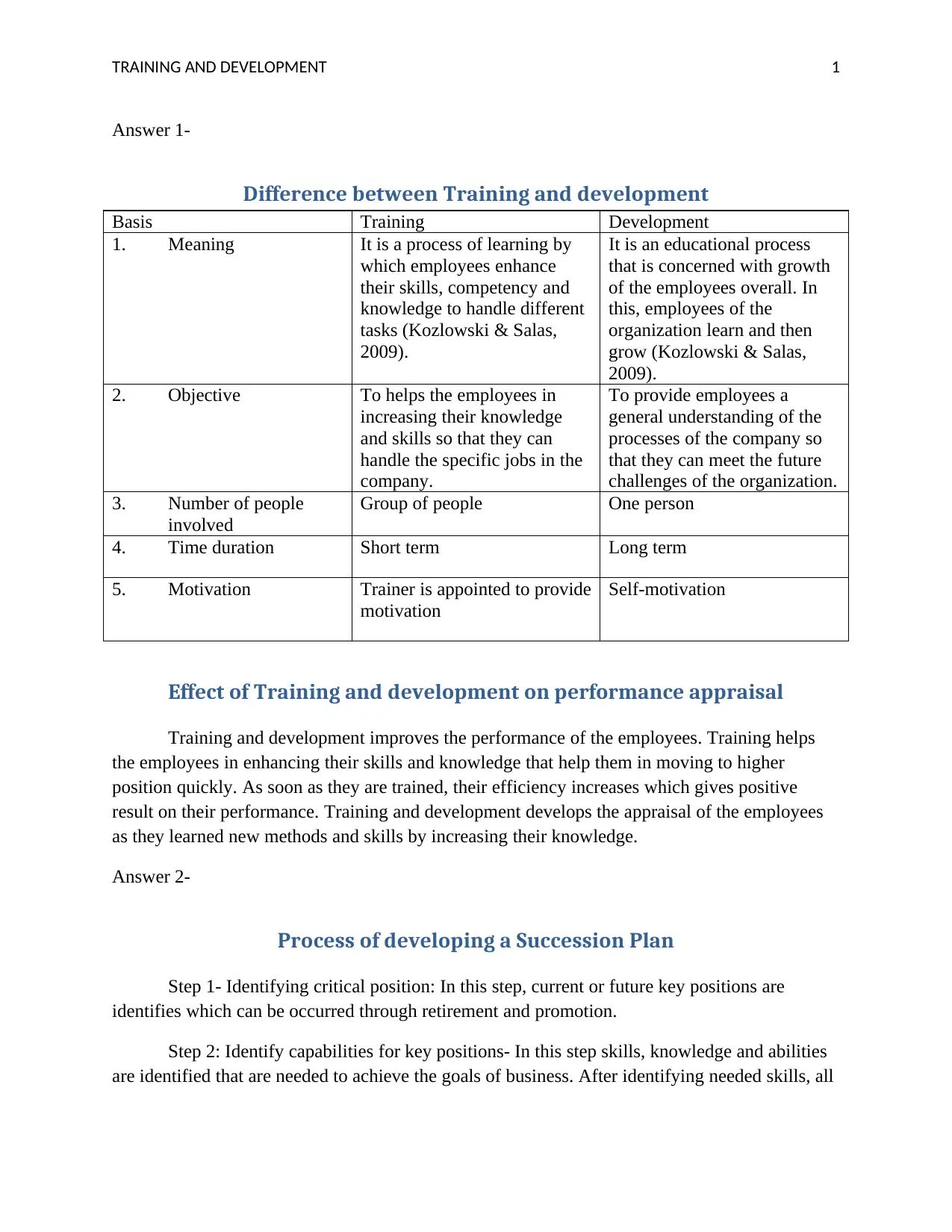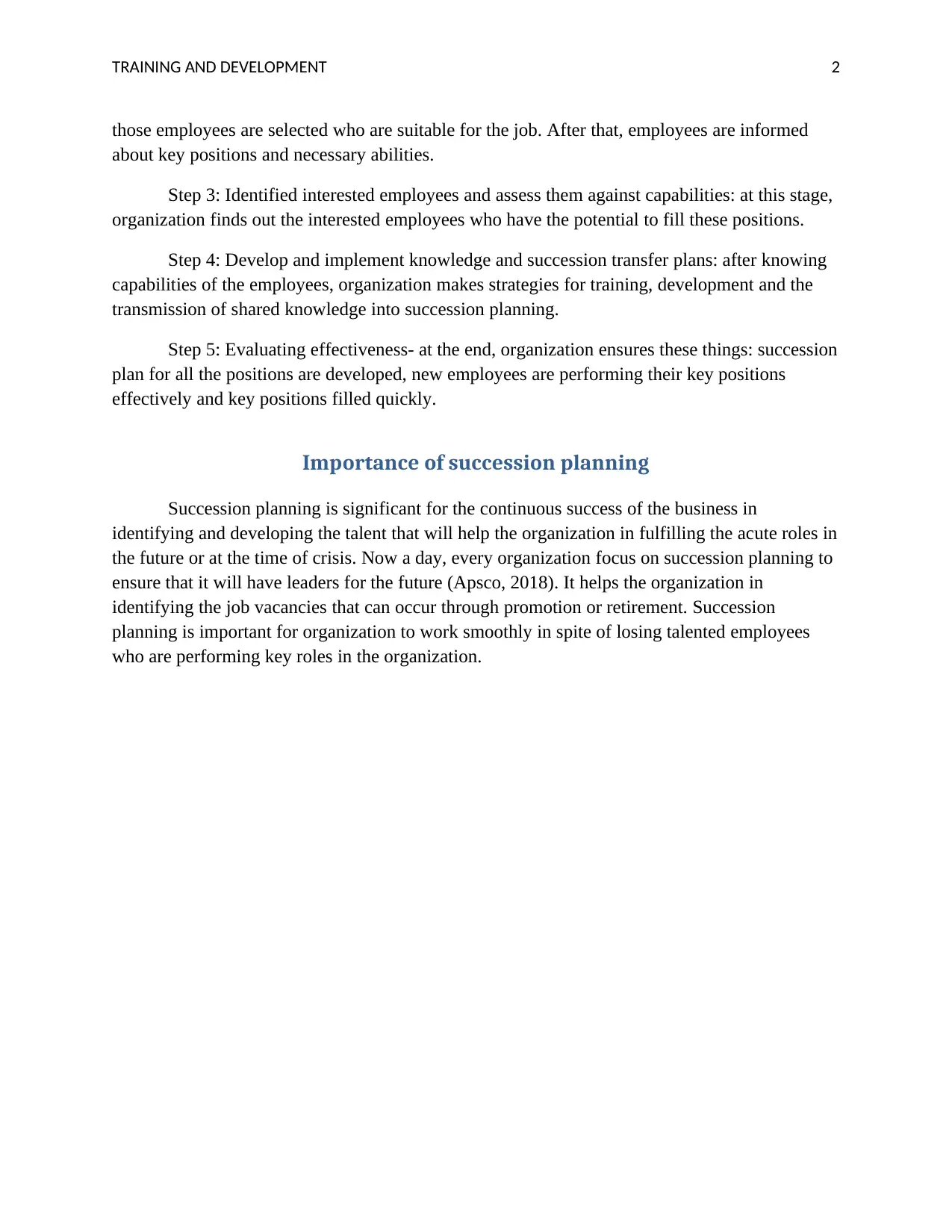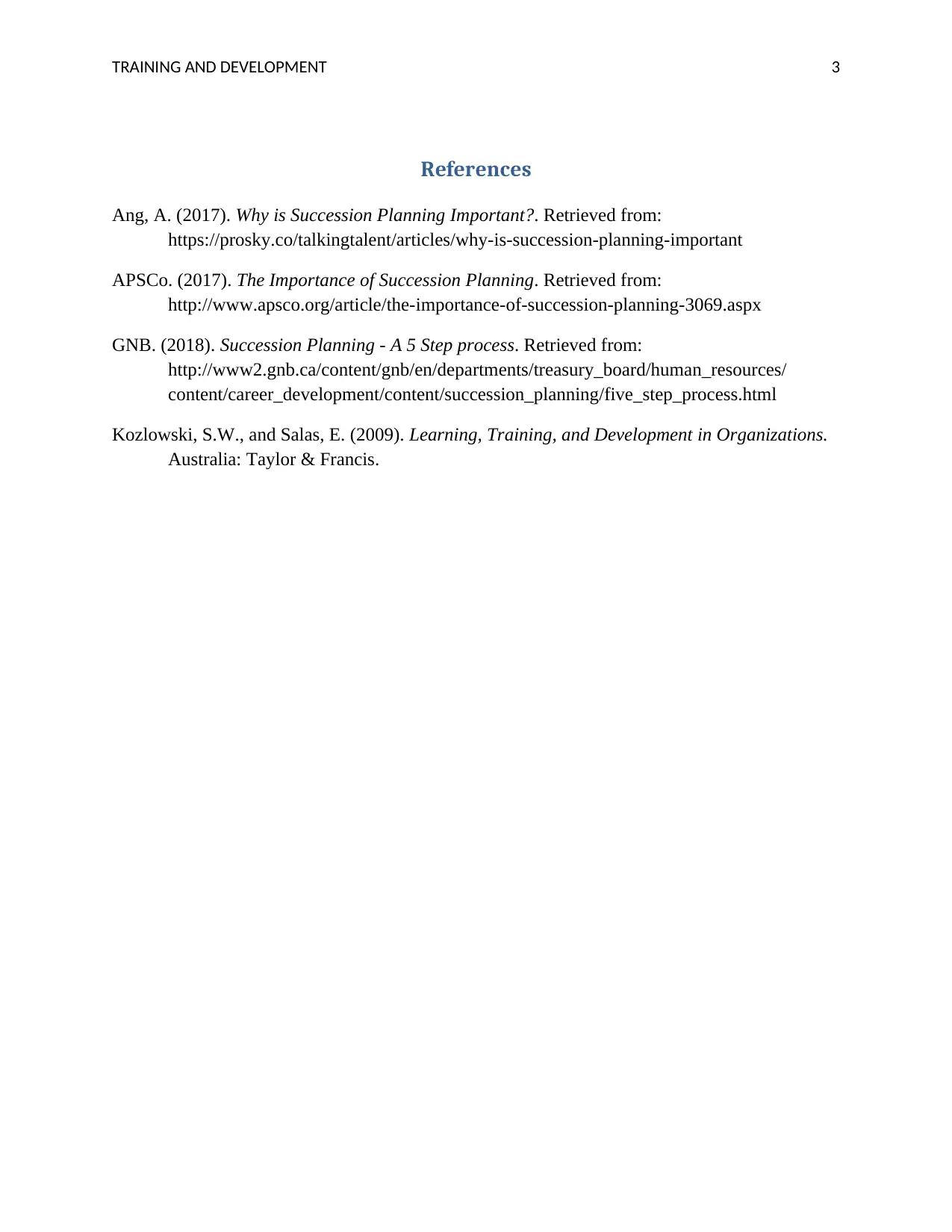Training and Development Assignment: Processes and Importance
VerifiedAdded on 2023/06/10
|4
|644
|341
Homework Assignment
AI Summary
This assignment solution explores the fundamental differences between training and development, highlighting their distinct objectives, timeframes, and impact on employee performance. It differentiates between training as a process focused on enhancing specific skills and knowledge for current job tasks, and development as a broader educational process aimed at overall employee growth and future organizational challenges. The solution details the step-by-step process of developing a succession plan, including identifying critical positions, assessing required capabilities, identifying interested employees, implementing knowledge transfer, and evaluating effectiveness. The importance of succession planning is emphasized, showcasing its role in ensuring business continuity, identifying future leaders, and smoothly managing transitions due to promotions or retirements. References from various sources, including Ang (2017), APSCo (2017), GNB (2018), and Kozlowski & Salas (2009), support the analysis.
1 out of 4











![[object Object]](/_next/static/media/star-bottom.7253800d.svg)